Constrained rural entrepreneurship in South Africa: A tale of two agricultures
- Centre for Enterprise and Entrepreneurship Studies
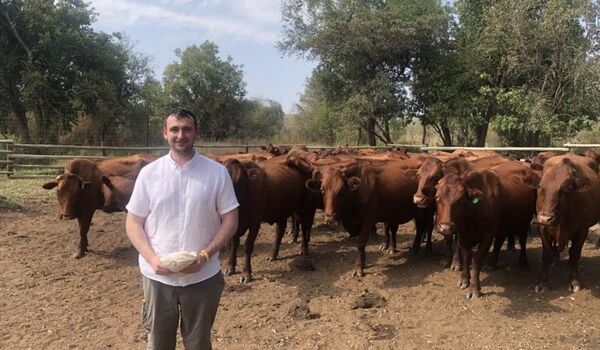
South African Agriculture
In May 2023, I [Peter Gittins] took part in a research trip to South Africa, funded by the International Research Collaborations Fund at the University of Leeds. The aim of my visit was to gain insight into the challenges faced by South African farmers and agricultural labourers. This research contributes to our ongoing body of work in the Centre for Enterprise and Entrepreneurship Studies on the topic of Constrained Rural Entrepreneurship.
As an outsider to the country but an insider to UK farming, I observed four main constraints faced by farmers in South Africa. These were: race and disparity, labour, climate challenges, and rural crime.
Race and disparity
South Africa has over 96 million hectares of farmland, with white South Africans comprising just over 7% of the population. However, black farmers produce only between 5 and 10 percent of the agricultural output in the South African context.
Indeed, this racial disparity is deeply rooted in the country's apartheid history, which continues to shape contemporary society. In 1913, the Native Land Act was enacted, making it illegal for black individuals to purchase farmland. Succession has undoubtedly contributed to farms remaining within families.
This legacy is apparent, with commercial farms typically owning large tracts of land and smallholders having less than 1-hectare farms. In addition to commercially sized farms, which represent a labour force of approximately 44,000, there are a further 1,690,000 employed in "subsistence agriculture," which plays a crucial role in food security for families living in the poorest circumstances. Sihlobo and Kirsten (2021) regard the country as having two agricultures, explaining there is "extreme dualism between predominantly white commercial farmers and mainly black smallholder farmers, and many failed efforts to grow the sector in an inclusive and transformed manner.”
Racial issues are still prevalent in contemporary South African society, with examples of segregation and significant income disparities. For example, on average, white individuals earn three times the salary of their black counterparts.
Segregated areas, such as rural villages, townships, and certain inner-city locations, are predominantly occupied by black individuals. Conversely, there are areas where white individuals are more likely to live, including farms, gated communities, and even a town designated as "for whites only," such as Orania.
Some argue that poverty is primarily a rural phenomenon. However, the rural context is complex and multifaceted, encompassing both extreme poverty and wealth, strongly influenced by race. As one travels through rural areas, a visible transformation occurs, with the presence of rural businesses such as exotic wildlife auction markets, private hunting and game reserves, and commercial farming activities.
Commercial farmers are well-established and connected to value chains. This stark contrast can be observed in less affluent rural areas, where visitors are greeted by smallholder farmers at the roadside attempting to directly sell a limited range of the same crops to passers-by.
Malnourished livestock, including cattle and goats, scavenging for food in litter-stricken areas, was also a common sight when driving through Limpopo on our journey to visit a commercial farmer. The realities between commercial and subsistence farmers differ significantly, like night and day.
Rural entrepreneurship holds vast potential to help transform these areas and uplift communities out of absolute poverty as well as making progress towards meeting many of the UN's Sustainable Development Goals. The World Bank recognizes that agriculture can help reduce poverty for 75% of the world's poor. Thus, efforts to create conducive environments that are supportive of farm development and rural entrepreneurship strategies should be welcomed.
The agricultural labour force
Farm workers are amongst the poorest of South Africa’s communities, with agriculture playing an important role for the economy, providing a GDP of 2.47% and employment in agriculture estimated to be at approximately 21.3% in 2021.
When comparing South Africa to countries like the UK and other developed nations, notable differences in labour conditions within the agricultural sector are evident. It is important to note that the conditions on the farms I visited in South Africa were not necessarily bad, as the interviewed farmers clearly showed concern for their workers. In fact, it was clear that the commercial farm owners (at least the ones I met with) genuinely cared about the well-being of their staff. However, labour conditions in South Africa do differ significantly from the agricultural standards in the UK, as one can imagine.
The commercial farmers I visited demonstrated care for their relationships with their workers and provided them with opportunities for development. For example, one interviewed farmer had invested considerable time in training his staff. The photo below exemplifies a concept in academic entrepreneurship literature called bricolage—fabricating something from nothing.
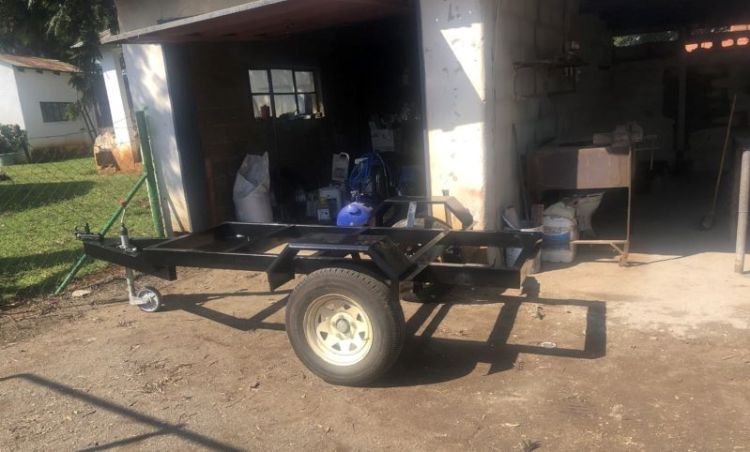
A trailer fabricated by a farm labourer working on a large commercial farm. (Image author's own.)
But in general, for farm workers in South Africa, the reality often involves low-skilled, repetitive jobs with minimum wage compensation. It remains questionable how individuals can escape poverty when earning R25.42 per hour (£1.13 per hour). This stands in contrast to the UK, where the agricultural sector faces challenges in attracting a labour force for low-skilled work, even with some fruit-picking positions paying up to £30 per hour.
Being a UK farmer entails a different social position. While UK farmers do face profitability issues of their own, their current realities cannot be compared to those in the developing world.
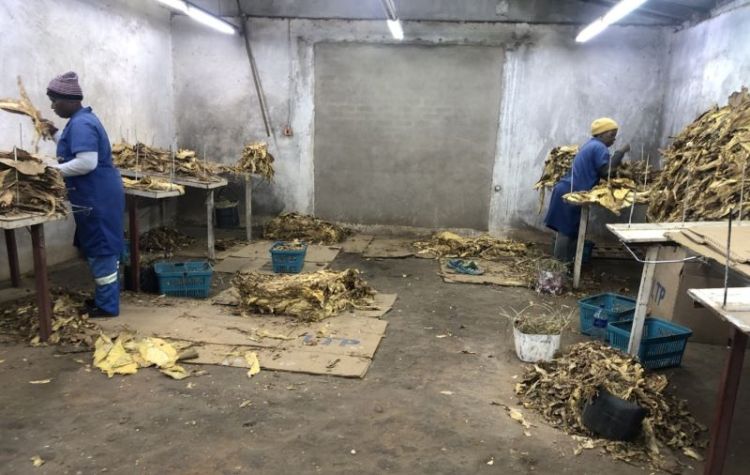
Processing dried tobacco leaf. (Image author’s own.)
Climate Challenges
In 2022, South Africa's agricultural exports experienced a notable increase, reaching $12.8 billion. The country's favourable weather conditions make it suitable for the production of various commodities, including citrus fruits, wine, nuts, sugar, beef, and wool.
Commercial farming plays a vital role in the export sector, with approximately 32,000 commercial farmers operating in the country. Notably, around 5,000 to 7,000 commercial farmers are responsible for generating roughly 80 percent of the agricultural output of South Africa. However, small-scale farmers and farm workers face distinct economic challenges. It proves challenging for small-scale farmers to find their position in the agricultural value chain.
Weather conditions pose a significant risk, as a single destructive event like hailstorms can devastate an entire crop and have adverse effects on farm economics. Moreover, the presence of invasive animals such as jackals, elephants, and baboons can cause extensive damage to farm crops. Complications arise when these animals are protected, creating additional challenges for farmers (see photo below).
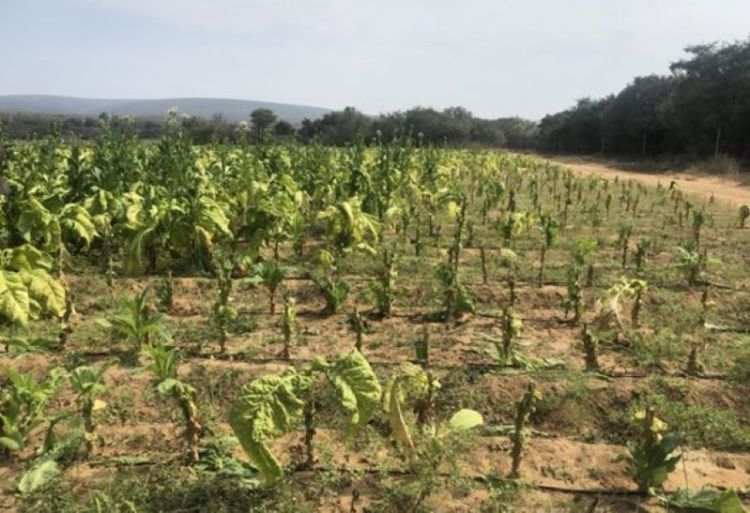
The damage that wild animals, baboons in this case, cause to a farmer’s tobacco crop. (Image author’s own.)
From the commercial farmers I visited, they are optimising their farming systems around the weather, striving to turn constraints into opportunities. For instance, on one farm, solar panels were installed, leading to the creation of renewable energy. This not only provided a personal electricity supply to combat load shedding (a situation where electricity demand exceeds the supply, leading to daily power outages) but also offered shaded areas for the sheep.
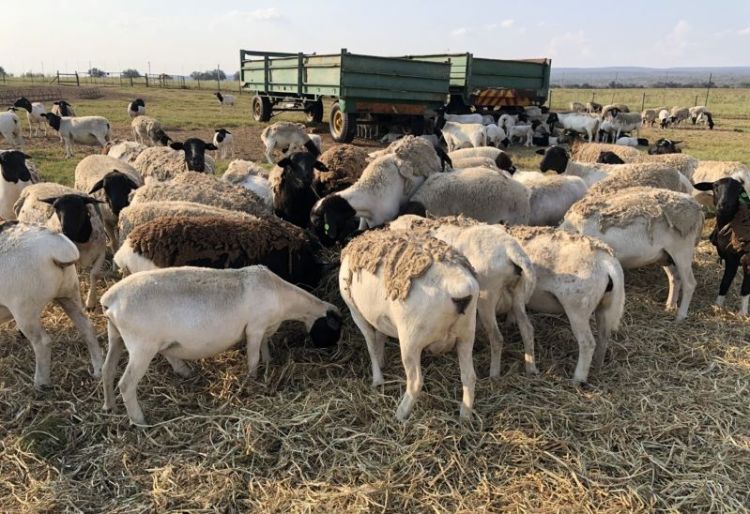
Dorper sheep - A breed suited to the hot African climate, whereby the wool falls off naturally. (Image author’s own.)
The motivation behind installing solar panels on the farm differed from the environmental considerations often seen in countries like the UK, where reducing greenhouse gas emissions drives the adoption of renewable energy. In South Africa, the primary driving factor was the response to load shedding.
Commercial farmers have the capacity to invest in resources that reduce dependence on national electricity supplies. They utilise various alternatives, including diesel generators, coal-fuelled heaters, and biofuel options. Commercial farmers often have the resources to assess risks, utilising technology and farm equipment to make better-informed decisions. Small-scale farmers do not have this luxury.
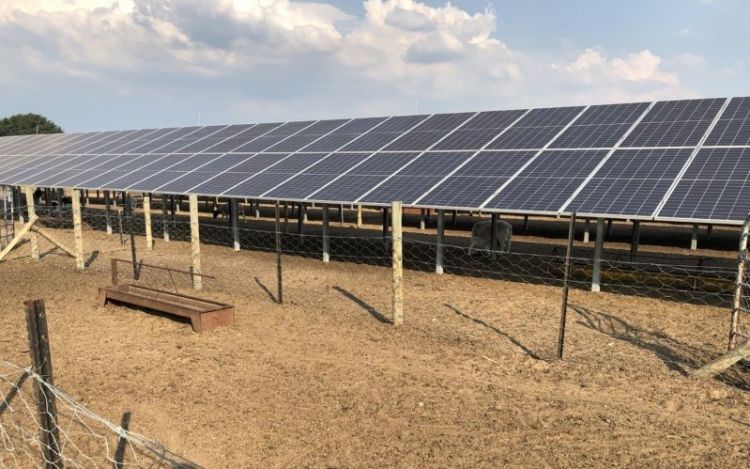
Solar panels on the farm. (Image author’s own.)
Rural crime
Crime influences society in various ways, and the rural context is not exempt from its impact. The nature of crime is diverse, ranging from petty opportunistic activities like theft and muggings to high-level organized crime that corrupts business dealings and even government.
Farm owners in South Africa have voiced their concerns about recent criminal activities. One farmer informed me that there was no electricity on their farm, not due to load shedding, but because thieves had cut down the electricity poles and stripped them of copper. Other instances of on-farm theft were also problematic, such as machinery being regularly stripped of parts.
Furthermore, I noticed a lack of sheep- animals I'm used to being surrounded by, being both a farmer and living in Yorkshire. I was told that sheep are extremely difficult to keep, not because of the climate, but because they are easily stolen. Previous research has also acknowledged this issue, but within a UK context.
The layout of farms has been adapted to counter this crime. During an interview with a farmer, they explained how their farm was designed in a way that intruders could not break in, removing all windows from the ground level and installing boreholes located underneath the property to ensure that the water supply could not be cut off. While this may seem over-the-top in the UK, it is a real threat in South Africa, considering the history of farm attacks. Between April 2019 and April 2020 alone, 49 white farmers were killed.
But by far, one of the most significant and lucrative opportunities in rural areas is linked to higher levels of rural crime. Farm workers often possess insider knowledge of the local rural environment, which can be exploited. For example, they can be paid for providing intelligence on the whereabouts of rhinoceros for poaching, with each rhinoceros valued at 500,000 rand. These animals can be killed within minutes. I saw more anti-poaching teams than police during my travels.
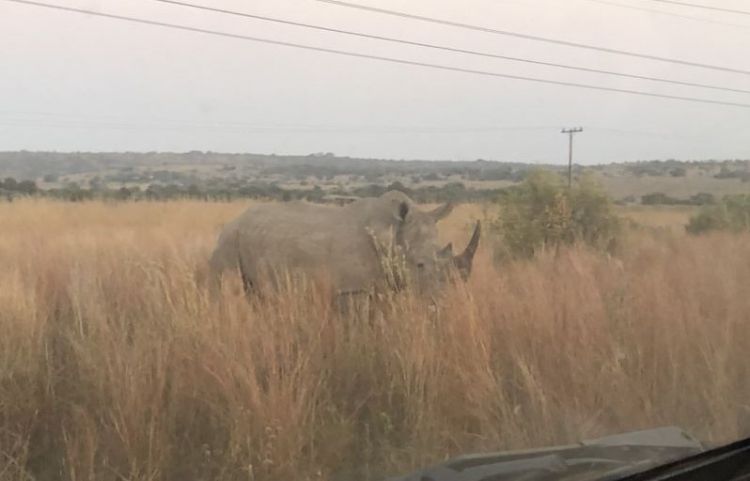
White rhinoceros - often poached for its horn. (Image author's own.)
There are significant security risks for farmers. During one farm visit, we were shown nearby "informal" mining operations. Land with rich minerals can be forcibly taken from farmers, often accompanied by deadly force. The farmer shared that he had exchanged one hectare of mineral land for four hectares of farmland, which was seen as an excellent alternative to having the land forcibly taken from him.
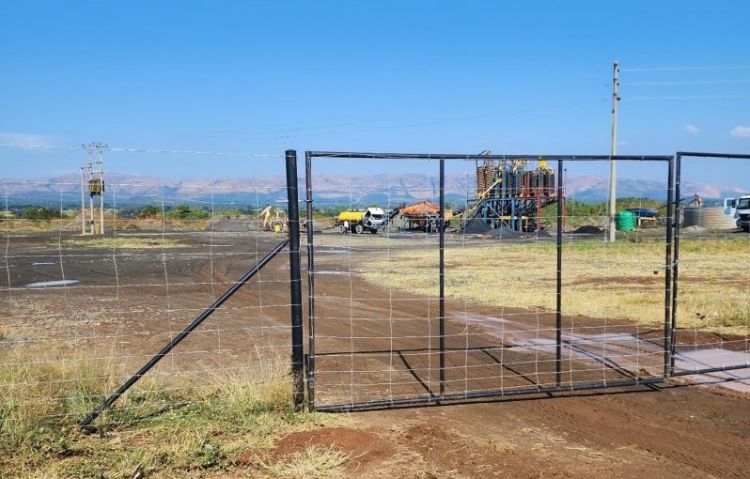
Illegal mining operations. (Image author’s own.)
Points of policy considerations: Learnings from both contexts
Although farming in South Africa is remarkably different to farming in the UK, there can still be some lessons learned by drawing parallels.
In South Africa, we see a nation where limited government support is provided to the agriculture industry. We observe racial inequalities, with predominantly white commercial farmers dominating production and living in separate class systems from their workforce.
It is clear that more support is needed for black farmers to help them transition from agricultural workers to agricultural owners. This highlights the need to promote entrepreneurship within the South African agriculture sector. Greater support is required to assist black individuals in starting farming businesses and running successful ventures. Further research is needed to overcome the constraints to entrepreneurship in the South African agricultural sector. This is something I plan to build on via future collaborative projects.
While the South African government has previously pursued initiatives to promote the involvement of black people in farming roles, redistribution schemes implemented in 2006, while well-intentioned, did not yield the desired outcomes. In this scheme, 98% of the land was classified as "fair to good," yet the results were disappointing, as farmers struggled to effectively cultivate these lands, leading to soil degradation, overgrazing, and poor planting decisions.
Access to land is one critical issue, but effectively managing a farm is another. Farmers need to know how to efficiently manage their resources, taking into consideration regional and sectoral industry constraints. They must understand which crops to plant and how to utilise data to make informed decisions that promote smarter farming practices, rather than simply working harder. Therefore, training and ongoing support, beyond capital, are necessary. These aspects should be carefully considered by rural policymakers.
However, while some farmers understand the importance of soil health and using technology to inform their farming practices, most small farmers cannot afford these resources. Farmers, regardless of whether they are in developing or developed contexts, must align their farm resources with their own strategic thinking capabilities, recognising how their farm aligns with the natural environment and the specific contextual constraints of their business. While developing the business management skillsets of farmers may seem like a simple solution, in practice, it is much more challenging.
South African farmers require support in entering the farming sector and being connected to value chains, transitioning from workers to owners, and navigating the uncertainties of agricultural production. Developing farm entrepreneurial skillsets is essential in this constrained rural South African context.
Contact us
If you would like to get in touch regarding any of these blog entries, or are interested in contributing to the blog, please contact:
Email: research.lubs@leeds.ac.ukPhone: +44 (0)113 343 8754
Click here to view our privacy statement. You can repost this blog article, following the terms listed under the Creative Commons Attribution-NonCommercial-NoDerivatives 4.0 International licence.
The views expressed in this article are those of the author and may not reflect the views of Leeds University Business School or the University of Leeds.

